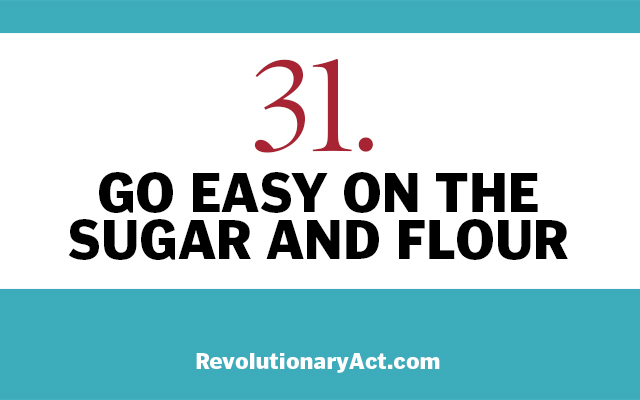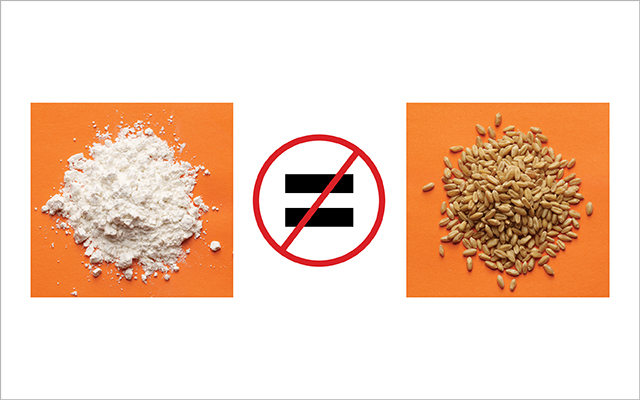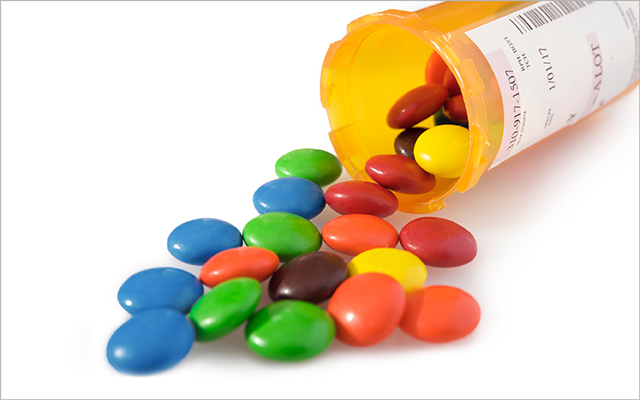Many people make the big, important decision to eat healthier only to find themselves confronted with another big, important decision: “Where on earth should I start?”
Overwhelmed by complex and contradictory nutritional counsel, they are looking for some streamlined way to upgrade their eating without descending into analysis paralysis or totally disrupting their lives.
If that sounds like you, I have two related pieces of counsel, and which one you choose depends mostly on how much of a change you are ready for.
My first piece of advice is this: Eat mostly whole foods most of the time. But I realize that can feel daunting to many, particularly at first. So my second piece of advice (really just a baby-step version of the first) is this: Avoid processed sugars and flours.
I put sugars and flours together in a single category because I am convinced they do more damage to more people in more ways than most of the other problematic ingredients combined.
Moreover, once you eliminate these pro-inflammatory marauders, you also eliminate, by extension, a vast fleet of processed foods that contain other nasty co-conspirators (like artificial flavors, sweeteners, and colors; trans fats; industrial vegetable oils; chemical preservatives; and crazy doses of salt) that almost always come along for the ride.
Now, I suspect that the advice to cut back on sugar is not new to you. Over the past several years, we’ve been hearing a lot about how negatively excess dietary sugars can affect our health.
They do this by unbalancing blood sugar, destabilizing hormones (not just insulin but also sex hormones and growth hormones), suppressing metabolism, increasing visceral fat, contributing to oxidative stress, damaging cells and DNA, and messing with our microbiomes.
They also drive cravings and disordered eating patterns that contribute to weight problems, and they wreak all sorts of other health havoc.
The net effect of this is a dramatically increased risk of inflammatory conditions like metabolic syndrome, type 2 diabetes, heart disease, some cancers, and that much-feared diagnosis, Alzheimer’s disease.
In fact, Alzheimer’s is now known in some medical circles as “type 3 diabetes.” Why? Because, as the authors of a seminal article in the Journal of Diabetes Science and Technology conclude, “the term ‘type 3 diabetes’ accurately reflects the fact that [Alzheimer’s disease] represents a form of diabetes that selectively involves the brain.”
OK, so we now know that excessive sugar intake is pretty deadly. And it’s great that more people are becoming more keenly aware of this fact.
But here’s something far fewer people understand: Most flours act like sugars (and, in fact, rapidly turn into sugars) once inside the body.
I know this might sound crazy. After all, for decades, we’ve been conditioned to think of grains as a supremely healthy choice.
We’ve been encouraged to reach for packaged foods emblazoned with labels proclaiming their “whole-grain goodness!” We’ve heard our doctors recommend whole-grain cereals for breakfast, whole-grain sandwiches for lunch, and whole-grain pastas for dinner.
But when whole grains get pulverized into the fine-particle dust of flours and starches, they’re not really whole anymore. Their surface area becomes much greater, and their resistance to digestion becomes much lower. As a result, they’re rapidly assimilated by the digestive system, transformed into glucose (i.e., sugar), and shuttled directly into the blood stream.
From there, just like any other sugar, they trigger the release of insulin. Meaning that when consumed in excess, they can contribute to insulin resistance and type 2 (and “type 3”) diabetes.
Seen from the body’s perspective, flours look like sugar, act like sugar, and do most of the same kinds of damage that sugar does. Period.
Given that, having sugar-free jam on your bagel doesn’t really make a lot of sense. Eating a breakfast cereal with only 10 grams of added sugar (while still better than eating one with 30 grams) isn’t necessarily the nutritional victory it might seem to be. And eating a bag of snacks (like pretzels, or corn puffs, or pita chips) that have no added sugar but do have plentiful flours or starches is the dietary equivalent of taking one step forward and two steps back.
So here are some ways to start minimizing your intake of sugar- and flour-laden foods.
1. Expect to see them everywhere.
Foods containing significant amounts of sugars and flours are the most prevalent foods in our society. You’ll find them dominating most grocery-store shelves, buffet lines, school lunch trays, restaurant menus, vending machines, and quite likely (until you do some serious clearing), many of your own kitchen shelves.
Breads, buns, rolls, bagels, breakfast cereals, pancakes, waffles, pastas, pizzas, crackers, snack chips, pitas, pretzels, tortillas, couscous, pastries, candies, ice cream, ketchup, barbeque sauce, canned soups, frozen entrées, soft drinks, fried foods, breaded coatings, salad dressings, craisins, croutons — the list of foods containing significant amounts of sugars, flours, and starches reads like a who’s who of America’s favorite foods and beverages.
2. Start reading ingredient labels.
You’ll see that many “healthy” foods contain shocking amounts of added sugars and flours, and are often the first ingredients.
Breakfast cereals (even whole-some-looking ones) typically contain one or more types of flour or starch, followed by one or more forms of sugar. Some oft-recommended breakfast options, like instant oatmeal and bran muffins, have glycemic loads so intense that they spike insulin faster than white bread.
Gluten-free goods, in particular, tend to contain a lot of starches, which are really just hyperprocessed forms of flour (i.e., sugar).
Read the label on your average protein or energy bar (even the paleo kind) and you’ll probably find concentrated sugars like cane syrup, agave syrup, rice syrup, coconut sugar, beet sugar, honey, fructose, or date paste among the top-three ingredients.
Many virtuous-looking juices and smoothies lead with super-sweet apple, grape, or pineapple juice — a stealth delivery system for high-density sugars that make you go “mmm!” and promptly glug down the two or three servings that the smallish bottle supposedly contains.
3. Rethink the role of vegetables.
If you’re eating fewer sugars and flours (the substrate of the standard American diet), you’re going to have to replace them with something. For this purpose, may I commend unto you the most excellent members of the nonstarchy vegetable kingdom?
There’s a growing trend toward replacing bland breads, pastas, rice, couscous, and crust-like things with beds of sautéed greens, riced cauliflower, grated slaws, or the spiralized vegetables of your choice, and for good reason: They are yummy and satisfying, and all those pretty colors and textures are quite beautiful to behold.
That’s important, because the ultimate goal here isn’t just to reduce your intake of flours and sugars. It’s to help you embrace a healthy, satisfying way of eating that will serve you — body and mind — for a lifetime.




This Post Has 0 Comments